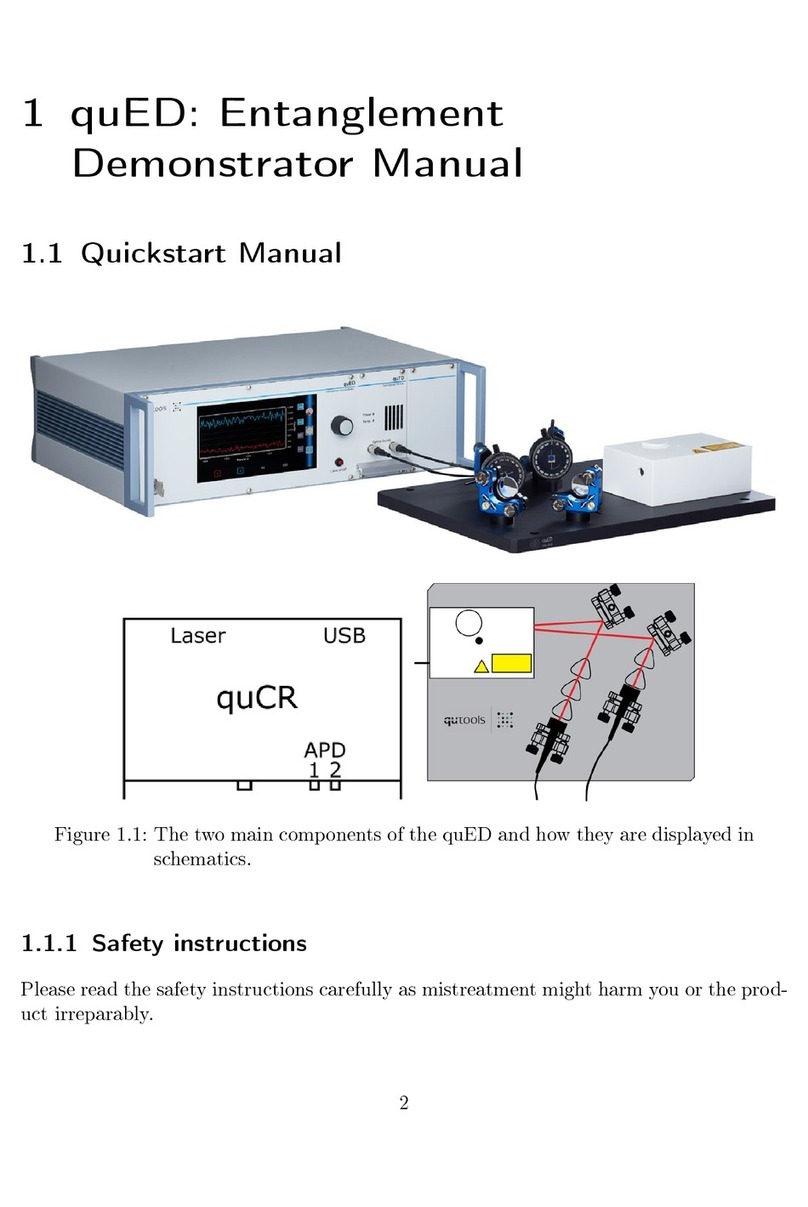www.qutools.com quED Manual 5
To obtain polarization entanglement from SPDC, the quED utilizes a well-known method of
coherent spatial overlap of the emissions from two adjacent type-I crystals. Consider two non-
linear crystals, both operated in type-I phase-matching configuration and pumped with linearly
polarized light. The otherwise identical crystals are oriented such that their optical axes lie in
mutually perpendicular planes. For example, let the optical axis of the first crystal be aligned in
the vertical plane and the axis of the second crystal in the horizontal plane. Due to the type- I
coupling, the down-conversion process occurs only in the crystal, where the pump photon is
extraordinary polarized, emitting two ordinary polarized down-conversion photons into the
characteristic cone. That is, with the vertically-polarized pump the down-conversion process
occurs only in the first crystal emitting pairs of horizontally polarized photons, whereas with
the horizontally-polarized pump it occurs only in the second crystal producing two vertically-
polarized photons. By pumping the crystals with light, linearly polarized at 45° with regard to
horizontal and vertical direction, there is an equal probability that a pump photon will be down-
converted in either crystal. Provided that the two emission processes are coherent with one
another, which is fulfilled as long as there is no way of ascertaining whether a photon pair was
produced in the first or the second crystal, the following entangled state is automatically
generated:
The symbols |and |represent the horizontal and vertical polarization state of photons
and the labels and correspond to the two spatial modes, which are in practice selected
by e.g., pinholes or fibers. The relative phase is determined by the details of the phase
matching and thickness of the crystals but can be controlled by adjusting the relative phase
between the horizontal and vertical components of the pump light.
The distinguishing information, which might possibly label the emission processes and thereby
reduce their mutual coherence, can be either of temporal or spatial character. The latter case
occurs whenever the emission modes from the two crystals are spatially distinguishable. To
avoid this situation, the nonlinear crystals have to be thin enough and the down-conversion
photons have to be collected into spatially single-mode channels, such as a pair of single- mode
fibers. The use of thin crystals ensures that the emission cones from the two crystals overlap to
a great extent. Moreover, the single-mode nature of the collection modes re- moves practically
all the spatial information the photons may have carried before entering the fiber.
Consequently, there is even in principle no way how to spatially distinguish whether the down-
conversion photons are coming from the first or the second crystal and therefore pure
polarization-entangled photon pairs can be detected.




























